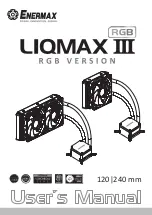
LENA-R8 series - System integration manual
UBX-22015376 - R02
Design-in
Page 50 of 116
C1-Public
an accessible push button is directly connected to the
RESET_N
pin, and it can be achieved by
mounting an ESD protection (as EPCOS CA05P4S14THSG varistor) close to the accessible point.
An open drain output is suitable to drive the
RESET_N
input from an application processor, as the line
is internally pulled up as illustrated in
LENA-R8 series
18
RESET_N
Power-on
push button
ESD
Open
Drain
Output
Application
Processor
LENA-R8 series
18
RESET_N
TP
TP
Figure 31: RESET_N application circuits using a push button and an open drain output of an application processor
Reference
Description
Part number
–
manufacturer
ESD
Varistor for ESD protection
CT0402S14AHSG
–
EPCOS
Table 19: Example of ESD protection component for the RESET_N application circuit
☞
It is recommended to provide direct access on the application board by means of an accessible
Test-Point directly connected to the
RESET_N
pin, for diagnostic purpose.
2.3.2.2
Guidelines for RESET_N layout design
The reset circuit (
RESET_N
) requires careful layout due to the pin function: ensure that the voltage
level is well defined during operation and no transient noise is coupled on this line, otherwise the
module might detect a spurious reset request. It is recommended to keep the connection line to
RESET_N
as short as possible.
2.4
Antenna interfaces
LENA-R8 series modules provide an RF interface for connecting the external cellular antenna: the
ANT
pin represents the RF input/output for LTE / 2G cellular RF signals transmission and reception.
LENA-R8001M10 modules provide also a GNSS RF interface for connecting the external GNSS
antenna: the
ANT_GNSS
pin represents the RF input for GNSS signals reception.
Both the
ANT
and the
ANT_GNSS
pins have a nominal characteristic impedance of 50
and have to
be connected to the related RF antenna system through a 50
transmission line to allow clean
transmission / reception of RF signals.
2.4.1
General guidelines for antenna interfaces
☞
The GNSS antenna RF interface is supported by LENA-R8001M10 modules only.
2.4.1.1
Guidelines for ANT and ANT_GNSS pins RF connection design
A clean transition between the
ANT
and
ANT_GNSS
pads and the host application board PCB must
be provided, implementing the following design-in guidelines for the layout of the application PCB
close to the
ANT
and
ANT_GNSS
pads:
•
On a multilayer board, the whole layer stack below the RF connection should be free of digital lines.
•
Increase GND keep-out (clearance) around the
ANT
and
ANT_GNSS
pads, on the top layer of the
application PCB, to at least 250
µ
m up to adjacent pads metal definition, and up to 400
µ
m on the
area below the module, to reduce parasitic capacitance to GND, as illustrated in the left example
picture of















































